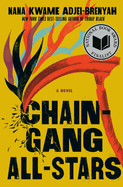
| Publisher: | Pantheon | |
| Genre: | Dystopian, General, Literary, Political, African American & Black, Fiction | |
| ISBN: | 9780593317334 | |
| Pub Date: | May 2023 | |
| Price: | $27 |
| Starred | Fiction |
by Nana Kwame Adjei-Brenyah
In his powerful, imaginative debut novel, Chain-Gang All-Stars, Nana Kwame Adjei-Brenyah (Friday Black) brilliantly exposes the for-profit infrastructure that exploits the incarcerated, as the larger-than-life characters stir compassion in readers. The titular all-stars have signed away their right to privacy, to their names, to their physical likenesses, to compete in gladiator-style fights to the death--televised nationwide. If, after three years, they survive these BloodGround contests, they go free, no matter the length of their sentence.
Loretta Thurwar, in her first contest, upsets the reigning favorite with a mere corkscrew. Eventually, she works her way up from Rookie to highest-rank Grand Colossal. If the situations seem farfetched, such as Grand Colossal Thurwar's "Question Mark" match against 16-year-old prisoner Teacup, they're not; footnotes lay out historical facts: George Stinney, Jr., was executed at age 14 in 1944.
Like the small HMC EyeBall cameras that hover around the all-stars, Adjei-Brenyah moves among their perspectives, as well as those who run the games and the Coalition to End Neo-Slavery. These HMCs (one of several technological marvels of Adjei-Brenyah's world building) record prisoners' most intimate moments, even Thurwar and fellow female inmate Staxxx making love. Tension builds as Staxxx does something Thurwar finds unthinkable; Thurwar keeps a secret; and protests escalate.
Adjei-Brenyah pulls no punches in the parallels he draws between incarceration and slavery, unpaid labor and power imbalance. His story may be fiction, but he delivers the truth. --Jennifer M. Brown, senior editor, Shelf Awareness
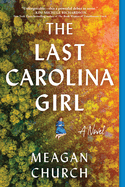
| Publisher: | Sourcebooks Landmark | |
| Genre: | Women, Nature & the Environment, Small Town & Rural, General, Literary, Southern, Fiction, Historical | |
| ISBN: | 9781728257150 | |
| Pub Date: | March 2023 | |
| Price: | $16.99 |
| Starred | Fiction |
by Meagan Church
Megan Church's stirring debut, The Last Carolina Girl, follows the newly orphaned 14-year-old Leah Payne, highlighting the true meaning of family in this Carolina-set coming-of-age novel. The warmth and comfort of Leah's life with her father in 1935 coastal Brunswick County, N.C., is suddenly ripped away to reveal the heartbreakingly raw reality of grief experienced at a young age. Leah is taken to stay with a respectable family and situated as their new helpmate since her father's tragic accident left her with no direct family members. Shocked by her sudden loss of freedom and the only home she's ever known, Leah is determined to please her new family, only to uncover hidden secrets and agendas. Stuck in this new, uneasy existence, Leah confesses, "I hoped sleep could rescue me from this unwanted reality, suspend me in a place where someone wanted me for more than service."
Mrs. Griffin, Leah's new caretaker, seems prejudiced against her from the moment she arrives. Through Leah's empathy-evoking display of raw vulnerability and adolescent emotions, Church exposes the desperation of a child to fit in and find a new home for herself. Leah's life is further complicated when Mrs. Griffin learns of the scientific ideology of eugenics, and sees it as yet another way to control and contort her own reality. An affecting and excellent depiction of family corruption and lies, The Last Carolina Girl challenges Leah to remember who she is, where she came from, and get where she wants to go--back home. --Clara Newton, freelance reviewer

| Publisher: | Gallery Books | |
| Genre: | Romantic Comedy, Adaptations & Pastiche, Romance, City Life, Fiction | |
| ISBN: | 9781668008393 | |
| Pub Date: | May 2023 | |
| Price: | $17.99 |
| Fiction |
by Audrey Bellezza, Emily Harding
Audrey Bellezza and Emily Harding offer a delightful, modern twist on Jane Austen's Emma in their first co-written novel, Emma of 83rd Street. Firmly ensconced on New York's Upper East Side, Emma Woodhouse has lived a smooth, even charmed, life for 23 years. But when her sister gets married and her friends go abroad, Emma finds herself bored and hankering for a new project. Enter Nadine, a wide-eyed transplant from Ohio in Emma's grad school program. As Emma befriends (and helps transform) Nadine, she's quite pleased with her efforts--or she would be if her neighbor George Knightley didn't keep poking holes in her self-satisfied armor.
Bellezza and Harding hit all the familiar beats of Austen's classic story: Emma's close-knit but exasperating family, including her health-obsessed father; the young men whose advances Emma sometimes misinterprets; the chatty, slightly down-on-her-luck neighbor; and the complex, longstanding relationship between Emma and Knightley. This Knightley is a venture capitalist, trying to do some good with his money and thereby distance himself from his (deceased) father. The crackling tension between him and Emma drives the story, but as in Austen's original, the relationship also leads both characters to some critical self-examination. Bellezza and Harding balance the introspection with a healthy dose of New York glitz, including sumptuous Sunday dinners, trips to the Met, and lavish parties. The narrative may lead to a predictable ending, but as with all Austen adaptations, the joy--and there's plenty of it--is definitely in the journey. --Katie Noah Gibson, blogger at Cakes, Tea and Dreams

| Publisher: | Bantam | |
| Genre: | Psychological, Sagas, Legal, Suspense, Thrillers, Fiction | |
| ISBN: | 9780345531841 | |
| Pub Date: | March 2023 | |
| Price: | $28.99 |
| Fiction |
by William Landay
In All That Is Mine I Carry with Me--a legal thriller with old-school efficiency and newer-school psychological complexity--William Landay proceeds with the line of inquiry he massaged in his breakout novel, Defending Jacob: When people are suspected of a crime, can their family members be held to a standard of objectivity?
Told from multiple viewpoints sequentially, the novel centers on the 1975 disappearance of Jane Larkin, a suburban Massachusetts mom who simply wasn't there one day when her 10-year-old daughter came home from school. There was conjecture that Jane ran off--but without her pocketbook, and without concern for her three kids? Jane's criminal defense lawyer husband, Dan Larkin, is a suspect in her disappearance, but the lead detective can't put together more than a circumstantial case against him. Four decades later, Dan is caught in a fog of Alzheimer's, but members of Jane's family are still undone by what happened and think they can find a way to breathe some life back into the cold case.
All That Is Mine I Carry with Me offers a classic mystery's rewards: scenes that seem straightforward may ultimately hold hidden significance; readers just don't know which ones will pan out until the novel's end. Like one of the book's main characters, Landay is an attorney turned novelist, and he puts his lawyer's expertise to fine use here, alongside what reads like a therapist's acuity, and a playwright's gift for snappy dialogue that makes even the novel's courtroom scenes whiz by.--Nell Beram, author and freelance writer
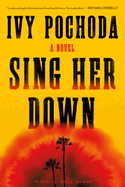
| Publisher: | MCD | |
| Genre: | Women, Crime, General, Westerns, Thrillers, Fiction | |
| ISBN: | 9780374608484 | |
| Pub Date: | May 2023 | |
| Price: | $28 |
| Starred | Mystery & Thriller |
by Ivy Pochoda
Ivy Pochoda (These Women; Wonder Valley) unleashes a combination of raw energy and poignant loss in Sing Her Down, a ferocious, feminist western. After just a few years in prison, Florence "Florida" Baum is told she qualifies for early release because the ongoing Covid-19 pandemic is endangering prisoners. But Florida soon realizes there are two catches. First, she must stay in Arizona, despite desperately wanting to return to her home of Los Angeles. And second, violent and volatile fellow inmate Dios is getting out, too. Florida, born and raised in wealth and privilege, claims she's different from the other women she's been with in captivity, but Dios is determined to prove to Florida that there is as much darkness inside Florida as there is inside herself.
Pochoda's succinct, tense prose sets readers balancing on a tightrope from the start. Told in clipped, atmospheric sections from the perspective of Dios, Florida, an inmate named Kace who hears the voices and stories of others in her mind, and Lobos, a cop with her own troubled past that she wants to escape, Sing Her Down keeps readers destabilized, running from one haunted voice to the next.
As these combustible voices ignite one another, it is Florida's story that takes center stage, positioning her as the novel's troubled protagonist. But while Pochoda invokes the classic western showdown of the hero facing off with a villain both in its opening imagery and in its breathless conclusion, she refuses to make Dios--or any other woman in this blistering and uncanny world--an easy villain. --Alice Martin, freelance writer and editor

| Publisher: | Doubleday | |
| Genre: | Legal, Suspense, Thrillers, Fiction | |
| ISBN: | 9780385548328 | |
| Pub Date: | May 2023 | |
| Price: | $29 |
| Mystery & Thriller |
by Stacey Abrams
After reading Rogue Justice, the second Avery Keene thriller by politician Stacey Abrams (While Justice Sleeps), even her staunchest detractors will have to admit: she really knows Washington politics. And national security. And the cyber world. And how to combine these elements into a fleet-footed, spine-chilling narrative.
It's some weeks before the presidential election, and Supreme Court law clerk Avery Keene is on Capitol Hill, testifying. The subject at hand: the impeachment of President Brandon Stokes, whom Keene is accusing of "criminal conspiracies that would make Nixon blush." Later, she receives a call from Major William Vance, Stokes's former right hand, now a fugitive. Respecting Keene's integrity, Vance warns her that he's learned of a planned technological attack on the United States. Some days after her chat with Vance, Keene is approached by Preston Davies, a clerk for a federal judge who has just committed suicide because, according to Davies, "Someone used a fake video to blackmail her into doing terrible things." Davies wants Keene to find out who was blackmailing the judge, but he's killed before she starts digging. Could Davies's murder be connected to the impeachment case?
To be clear, Rogue Justice isn't for political neophytes. Readers will have to log an alphabet soup of government-agency acronyms, and there are enough Beltway-insider characters to fill the Rose Garden. But Abrams is an assured writer and a boffo storyteller who makes diverting use of her knowledge of the American justice system. All politics aside, Rogue Justice is a nonpartisan thrill ride. --Nell Beram, author and freelance writer

| Publisher: | Kensington | |
| Genre: | Suspense, Thrillers, Fiction | |
| ISBN: | 9781496739759 | |
| Pub Date: | May 2023 | |
| Price: | $27 |
| Mystery & Thriller |
by Cindy Dees
CIA agent Helen Warwick is officially retired, but a bunch of shadowy people still want her dead in the rollicking mystery thriller Second Shot by Cindy Dees (His Christmas Guardian; Over the Top). At age 55, Warwick is done being a hit person for the CIA. Her three neglected kids are now fully grown--and a little bitter. To begin amends, Helen agrees to dog-sit for the puppy of middle child Peter and his partner, Li, while they enjoy a night out. Things go awry when four trained assassins burst in, shooting. Helen takes down three but one gets away, and Peter and Li's newly renovated house is left in shambles. Peter is livid, and the police don't understand how Helen got so lucky defending herself. Enter Yosef Mizrah, Helen's ex-handler, to help smooth things over. Yosef does some digging on who ordered the hit on Helen but is shot before coming up with a name. On her own and without a friend at the agency, Helen launches a rogue investigation. Meanwhile, the bullets keep flying, and both Helen and her family are caught up in the crossfire. Helen is older now and working alone without any idea of who is hunting her. She is kind of thrilled to have a second shot at her old job, but someone is determined to make it her last.
Author Cindy Dees's background (intelligence work and detainment by both the KGB and East German police during her military career) and the nuanced writing of Second Shot suggests more exciting adventures to come in a projected series. --Paul Dinh-McCrillis, freelance reviewer
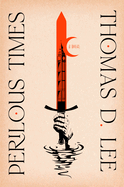
| Publisher: | Ballantine | |
| Genre: | Dystopian, Fairy Tales, Folk Tales, Legends & Mythology, Fantasy, Contemporary, Fiction | |
| ISBN: | 9780593499016 | |
| Pub Date: | May 2023 | |
| Price: | $28.99 |
| Science Fiction & Fantasy |
by Thomas D. Lee
Thomas D. Lee brings past and future together in Perilous Times, his witty debut novel featuring Arthurian knights waking up from sleep to help Britain in its time of peril--as they've been doing for a thousand years. But this time when they wake up, the world is nearly ending from climate change. Sir Kay assists Mariam as she's blowing up a fracking facility and joins her group of eco-warriors fighting the oil oligarchs who now rule England. Meanwhile Marlowe, whose deal with the devil in Elizabethan England has kept him alive all these years, wants Lancelot to carry out some very sketchy missions for him. When the knights don't live up to Mariam's expectations, she has to look beyond legend for the world's savior.
Perilous Times is full of violence and intense themes, but it's also full of hilarity and absurdity. Lee draws on his expertise in Arthurian legend, the subject of his doctoral study, to comment on ways of understanding legendary stories of the past, especially stories upon which the fabric of a nation like England has been built. No prior knowledge of Arthurian legend is necessary to enjoy the novel, but Arthurian aficionados will delight in seeing bits of lore verified or debunked by Kay, Lancelot, Morgan, Marlowe, and the others. Featuring a diverse cast, including medieval knights who are Black and gay, Perilous Times takes readers on a wild adventure as Mariam, Kay, and Lancelot figure out how to save the world and what being a hero truly means. --Dainy Bernstein, literature professor, University of Pittsburgh
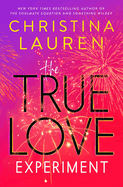
| Publisher: | Gallery Books | |
| Genre: | Women, Romantic Comedy, Romance, Fiction | |
| ISBN: | 9781982173432 | |
| Pub Date: | May 2023 | |
| Price: | $27.99 |
| Romance |
by Christina Lauren
Writing duo Christina Lauren has created another effervescent yet thoughtful romance in The True Love Experiment. Fans of some of Lauren's earlier novels will enjoy this return to their typical banter-filled rom-com style. Felicity ("Fizzy") Chen has had no luck on the dating scene, and it doesn't help that her best friend Jess (from 2021's The Soulmate Equation) is deliriously happy in her new relationship. Fizzy used to be a bestselling romance author, but writer's block is matching her woeful dating life, and she's struggling on all fronts.
Then a reality show producer approaches Fizzy about a love experiment. He wants her to star in a Bachelorette-type show, where she gets to date a bunch of men--and Fizzy thinks this might be just what she needs to get her writing career launched again. Unfortunately for Fizzy's plans, however, handsome producer Connor Prince is occupying much more of her thoughts than any of the men for whom she's supposed to be falling. Now she's worried that she's going to add "breaking all the reality tv rules" to her other problems.
Clever and knowing, Fizzy's take on the romance industry obviously owes a lot to Christina Lauren's real-life romance-writing experiences. With a bit of sly self-awareness, some hilarious romance tropes, and a cast full of engaging characters, The True Love Experiment is an entertaining foray into the realities of modern romance. Perfect for fans of reality dating shows or romantic comedies, The True Love Experiment is a ton of fun. --Jessica Howard, freelance book reviewer
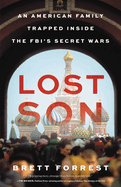
| Publisher: | Little, Brown | |
| Genre: | Biography & Autobiography, Editors, Journalists, Publishers, True Crime, Intelligence & Espionage, Espionage, Political Science | |
| ISBN: | 9780316591614 | |
| Pub Date: | May 2023 | |
| Price: | $30 |
| Biography & Memoir |
by Brett Forrest
In Lost Son, Wall Street Journal national security reporter Brett Forrest (Long Bomb; The Big Fix) tells the story of Billy Reilly, a Midwesterner who became enmeshed in the so-called War on Terror and the U.S.'s increasingly intense rivalry with Russia. Incorporating vast background material, shoe-leather reporting, and a constellation of high-profile and obscure sources, Forrest deftly blends international intrigue with personal drama and the satisfactions of hard-boiled noir.
A son of Oxford, Mich., in exurban Detroit, Billy Reilly was smart and bored with 1990s American life. But 9/11 awakened an immense interest in the outside world to which the family laptop and the Internet connected him. Reilly learned to read Russian and Arabic, converted to Islam, and virtually journeyed into Internet forums far from the physical safety of his parents' home. Drawing the attention of the FBI, Reilly--despite misgivings about U.S. foreign policy--became an informant. He possessed a keen ability to penetrate insular online communities of terrorist cells. However, he proved far less adept at real-world fieldwork and realized he was being exploited with no hope of advancement. Nonetheless, at the FBI's behest, he journeyed in 2015 to Russia and the Donbas region of Ukraine, what would become the beachhead of Russia's much larger invasion. Then he disappeared.
Forrest recounts Reilly's life and traces his disappearance, as well as the family's search for him, through the Kafkaesque labyrinths of the U.S. national security state. Lost Son is a gripping, provocative account of a tragic 21st-century American life. --Walker Minot, writer and editor
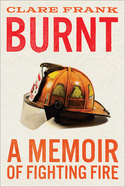
| Publisher: | Abrams Press | |
| Genre: | Biography & Autobiography, Women, Personal Memoirs | |
| ISBN: | 9781419763908 | |
| Pub Date: | May 2023 | |
| Price: | $27 |
| Biography & Memoir |
by Clare Frank
Clare Frank's Burnt: A Memoir of Fighting Fire is a heart-racing, heartfelt story that will make readers laugh, cry, and consider what matters most in life. The author is an indomitable character, from self-supporting teen through a decades-long career in California firefighting (beginning in 1982, when women were few and generally viewed askance), with impressive achievements in her career and personal life. Frank's memoir is packed not only with adrenaline but with sensitivity, thoughtfulness, and creativity.
After talking her unorthodox parents into emancipating her at 16, Frank becomes a firefighter at 17 (faced with an age requirement of 18, she simply leaves her birthdate blank on the employment form). She is indefatigable: stubborn, hardworking, short-fused, and tenacious. Frank rises through the firefighting ranks in her 33-year career (with a five-year doctor-mandated medical break), finishing with the lofty position of State Chief of Fire Protection, six ranks above captain, the highest she once thought she would be willing to attain.
Frank is a renegade overachiever in all areas: athletic, career, and (after a late return to the classroom) academic. Her writing is not merely serviceable, but thoughtfully constructed; her memoir's sections are labeled for stages of fire development: ignition, sustained heat, free burn, growth, full development, and decay. By the end of this memorable book, readers will reconsider fire policy as well as family, risk, and hard work. With thrilling momentum and a heat of its own, Burnt is a sensation and an inspiration. --Julia Kastner, librarian and blogger at pagesofjulia
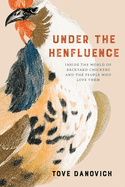
| Publisher: | Agate Surrey | |
| Genre: | Biography & Autobiography, Nature, Technology & Engineering, Pets, Animals, Personal Memoirs, Animal Husbandry, Birds, Agriculture, Essays, Essays & Narratives | |
| ISBN: | 9781572843219 | |
| Pub Date: | March 2023 | |
| Price: | $27 |
| Biography & Memoir |
by Tove Danovich
Journalist Tove Danovich's first book, Under the Henfluence, is a delightful blend of memoir, reporting, and straight-up chicken fangirling. While Danovich dreamed of owning backyard chickens during her years in Brooklyn, she never imagined they'd eventually take over her life. But when she moved to the Pacific Northwest and ordered three chicks (to start), the obsession began--and it soon went far beyond building a coop and finding the perfect names for her girls.
Danovich charts her journey from newbie chicken keeper to experienced manager of her own flock (mostly named after Mad Men characters, female detectives or country singers). She delves into the differences, cosmetic and otherwise, between breeds; visits a poultry show in Ohio; and talks to local vets about the difficulties of providing quality chicken care. Danovich also exposes the unsavory side of the poultry industry, admitting that even backyard chicken-keepers who treat their flocks like royalty are, in some ways, complicit in a system that's not good for either chickens or humans.
With wry, witty anecdotes and plenty of chicken jokes, Danovich makes backyard flocks compelling, even to readers who'd rather buy eggs than go hunting for them. She lovingly describes her chickens' personalities, chronicles her failures and triumphs in caring for them, and explores the complex human-chicken relationship: not quite livestock, not quite pets. Under the Henfluence is a fun, informative tour through the world of backyard chickens--for anyone who dreams of starting a flock or who wonders what the cluck all the fuss is about. --Katie Noah Gibson, blogger at Cakes, Tea and Dreams

| Publisher: | The New Press | |
| Genre: | Forensic Medicine, Public Health, Public Policy, Health Care, Asia, China, Diseases & Conditions, Health & Fitness, Contagious (Incl. Pandemics), Medical, History, Political Science | |
| ISBN: | 9781620977927 | |
| Pub Date: | March 2023 | |
| Price: | $27.99 |
| Starred | Current Events & Issues |
by Murong Xuecun
More than three years after the outbreak of Covid-19 comes Deadly Quiet City, an inside account of the pandemic's earliest days in Wuhan, China. Bestselling Chinese writer and critic of censorship and corruption Murong Xuecun (Leave Me Alone) relates the testimonies of eight Wuhan residents from late 2019 and early 2020, and the risks he took to get them. The result is a dramatic human mosaic, an urgent chronicle of a pivotal period in world history, and a fierce indictment of the Chinese Communist Party (CCP).
Through the perspectives of a frontline doctor, a citizen journalist (who has since disappeared), a delivery and odd-jobs worker, a caregiver for elderly parents, and more, Murong imparts an astute view of Wuhan's extraordinary trials and heroes, from essential workers to ordinary people who risked everything to do what they could to save their fellow human beings.
Not only eyeing the personal, Murong pierces the veneer of CCP propaganda and holds the government to account for its many failures--such as withholding the fact of the virus's human-to-human transmissibility in late December 2019, Potemkin hospitals, draconian lockdowns with insufficient supplies that often amounted to mass house arrest, and the sclerotic and indifferent bureaucracy--all of which he alleges dramatically worsened the global outbreak.
Collectively, the testimonies of Deadly Quiet City form a riveting account of human strength and resilience free of sentimentalism or idolatry, and a cross-sectional portrait that begins to clarify and preserve for posterity a chaotic place and time. --Walker Minot, freelance writer and editor
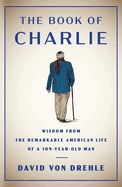
| Publisher: | Simon & Schuster | |
| Genre: | Self-Help, Personal Growth, Biography & Autobiography, Happiness, United States, 20th Century, History, Historical | |
| ISBN: | 9781476773926 | |
| Pub Date: | May 2023 | |
| Price: | $26 |
| Psychology & Self-Help |
by David Von Drehle
In 2007, longtime Washington Post columnist David Von Drehle and his wife, tired of the "hassles of urban parenting," uprooted their children and moved from Washington, D.C., to the suburbs of Kansas City, Mo. One day, Von Drehle spied a neighbor across the street washing a car in the August heat. That man was 102-year-old Charlie White, self-made, "hale and sturdy and razor-sharp," who would become a very good friend of Von Drehle--and an influence so profound that he inspired The Book of Charlie, a splendidly woven, inspirational memoir that explores the meaning of life and the resilience of the human spirit.
Over the course of seven years, Von Drehle became fascinated by Charlie and his history. He was born when William Howard Taft was president, and he experienced life before the existence of highways, radio, movies, even penicillin. Whip-smart, independent, and crafty Charlie grew up with four siblings in a family that accommodated his father, a Christian pastor--who died at the age of 42 in a freak accident when Charlie was eight. The tragedy forged an indomitable, stoic resourcefulness in Charlie. He had a deeply rewarding career as a doctor, as well as marriages, children, and familial challenges. He chose not to dwell on unhappiness. He understood and accepted that "every life is a mixture of comedy and tragedy, joy and sorrow, daring and fear," and barreled on.
Charlie made an art out of living; in much the same way, Von Drehle (Rise to Greatness; Triangle: The Fire that Changed America)--with eloquence, care, respect, and admiration--makes art out of Charlie's life story. -- Kathleen Gerard, blogger at Reading Between the Lines
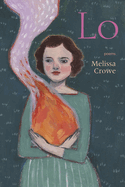
| Publisher: | University of Iowa Press | |
| Genre: | American, General, Poetry | |
| ISBN: | 9781609388997 | |
| Pub Date: | May 2023 | |
| Price: | $20 |
| Starred | Poetry |
by Melissa Crowe
In Melissa Crowe's incandescent second book, the Iowa Poetry Prize-winning Lo, threats are everywhere, but love and beauty counteract them. Incorporating a variety of forms, this collection of 35 affecting autobiographical poems travels from impoverished girlhood to marriage and motherhood in the post-pandemic U.S.
Crowe (Dear Terror, Dear Splendor) delves into the reality of sexual abuse and growing up in rural poverty. Some days there was, literally, no money; she and her parents took turns washing in the same bathwater. The multi-part "When She Speaks of the Fire" remembers molestation by a friend's father, which was an open secret in her community; when he was arrested for related crimes, no one asked about her experience: "they didn't want to know." Guns are insidious here: whether used for hunting or for random and mass shootings (as in "America You're Breaking"), they reflect a violence as inescapable as the misogyny that lay behind her childhood abuse. Trauma lingers. "Maybe home is what gets on you and can't/ be shaken loose," Crowe wonders.
Yet the collection is so carefully balanced in tone that it never feels bleak. In elegies and epithalamiums (poems celebrating marriage), as well as free forms, Crowe honors the family ties that bring her solace, such as her husband and college-bound daughter. Time's elasticity means events could seemingly be "twenty years ago or/ Wednesday." Aching loss, teasing sensuality, fear, and wonder at natural beauty: the volume's emotional range is enhanced by alliteration and botanical imagery, with the poet's resilient "heart a foraged/ apple, still green." --Rebecca Foster, freelance reviewer, proofreader and blogger at Bookish Beck

| Publisher: | Legacy Lit | |
| Genre: | Biography & Autobiography, Inspiration & Personal Growth, Men's Studies, Body, Mind & Spirit, Literary Collections, Cultural, Ethnic & Regional, African American & Black, Social Science, Essays | |
| ISBN: | 9780306923982 | |
| Pub Date: | May 2023 | |
| Price: | $17.99 |
| Now in Paperback |
by D. Watkins
D. Watkins wrote about growing up in east Baltimore in The Cook Up and The Beast Side. In Black Boy Smile: A Memoir in Moments, he dissects what he calls "the lie": codes of Black masculinity that forced him into stoic silence in order to survive his upbringing. Black Boy Smile--a Shelf Awareness Best Book of the Year--feels radical in its openness and its vision of a Black manhood that does not require bottling up feelings of pain or joy.
Watkins recalls a childhood plagued by violence, the collateral effects of the drug trade, and feelings that he didn't know how to process or share. But Black Boy Smile is far from a parade of traumatic memories. Watkins's colorful prose delivers humor and attitude at every turn, particularly in the vivid descriptions--"the stumpy teacher, dressed in three different shades of JC Penney brown"--and in the way he and his friends joke with each other. Some of the most memorable conversations take place between Watkins and Tweety Bird, his friend's girlfriend, whose "heart was bigger than the whole side of east Baltimore." Their playful, teasing exchanges circle around the deeper truth of Watkins's transactional relationships with women, which in turn hints at the loneliness he tries hard to bury.
Watkins finds himself selling drugs and earning a great deal of money, but becoming increasingly miserable. The first hint of a brighter future comes through books. He goes on to attend college: "being Black in an MFA program is kind of like being white in the Black Panther Party." That culture clash leads to some of the book's funniest, most cutting sentences. He finds love in a relationship markedly different from the cold arrangements he once preferred. A particularly moving passage describes Watkins's journey to becoming a father. Through it all, his love for the people of east Baltimore shines through, and Watkins's story is ultimately a hopeful, redemptive one. --Hank Stephenson
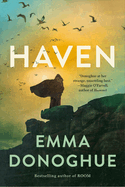
| Publisher: | Back Bay Books | |
| Genre: | Medieval, Fiction, Action & Adventure, Historical, Sea Stories | |
| ISBN: | 9780316414135 | |
| Pub Date: | May 2023 | |
| Price: | $17.99 |
| Now in Paperback |
by Emma Donoghue
In Emma Donoghue's deliciously claustrophobic 12th novel, Haven, three seventh-century monks set sail for an island off the coast of Ireland. Their project of founding a new monastery will be beset by scarcity, personality clashes and everyday disasters.
Artt has a dream, "an instruction to withdraw from the world. To set out on pilgrimage with two companions... and found a monastic retreat." He chooses 19-year-old Trian and Cormac, an older man. This shabby trinity leaves the monastery in a small boat packed with meager supplies. A fraught journey delivers them to the Great Skellig, a craggy island where their days are marked by privation and repetitious tasks. A dropped bag of flour or an infected leg wound could mean the difference between life and death. Although the rituals of daily prayer and weekly Communion, and the recounting of legends, feed the soul, the body is another matter: "Hunger is a constant argument."
The Great Skellig, previously unvisited by humankind, seems like a kingdom of seabirds. The novel is saturated with the sight and sound of thousands of birds. Donoghue (The Wonder; Frog Music) excels at creating isolated atmospheres and examining the dynamic of small casts of characters. Haven may be just one letter away from heaven, but this island community looks less like either and more like a prison as time goes on. A powerful study of religious obsession and confinement, this is one for readers of Matrix and To Paradise. --Rebecca Foster, freelance reviewer, proofreader and blogger at Bookish Beck

| Publisher: | Minotaur | |
| Genre: | Psychological, Suspense, Thrillers, Fiction | |
| ISBN: | 9781250889683 | |
| Pub Date: | May 2023 | |
| Price: | $18 |
| Now in Paperback |
by Jennifer Hillier
Myriad things, mostly bad, happen in the dark: human monsters step out to prey on the vulnerable. But sometimes those with the strongest willpower find their strength arising from the ashes of terrible situations, as does Paris Peralta in Things We Do in the Dark, Jennifer Hillier's superb psychological thriller about survival.
Paris lived through horrific child abuse at the hands of her mother and sexual attacks from her mother's many boyfriends. She not only survived but reinvented herself with a new identity, moved to Seattle, and married Jimmy Peralta, once a popular and successful comedian. But her carefully curated life and long-held secrets may be exposed when she's arrested for murdering Jimmy, who was just about to launch a lucrative comeback. Tabloid headlines pounce on the facts: Paris was holding the bloody straight razor, and she's almost 30 years younger than the wealthy Jimmy. The press also ridicules her Filipino heritage. As Paris deals with her legal problems, Canadian journalist-turned-crime podcaster Drew Malcolm begins work on a project about Ruby Reyes, nicknamed the Ice Queen, who is being paroled after serving 25 years of a life sentence for murdering her rich, married lover.
This seventh novel from Hillier (Little Secrets; Jar of Hearts) moves briskly, with believable twists, and emotionally damaged characters who refuse to allow their pasts to rule their present lives. Though the connection to the two plot threads may be obvious, Hillier skillfully ladles intense emotion and realism as Things We Do in the Dark reaches its jaw-dropping denouement. --Oline H. Cogdill, freelance reviewer
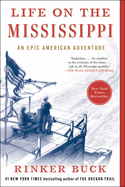
| Publisher: | Avid Reader | |
| Genre: | Travel, United States, General, Essays & Travelogues, History, Expeditions & Discoveries | |
| ISBN: | 9781501106385 | |
| Pub Date: | May 2023 | |
| Price: | $19.99 |
| Now in Paperback |
by Rinker Buck
For Rinker Buck, conquering the 2,000 miles of river between Pittsburgh and New Orleans on a hand-built wooden flatboat was more than an attempt to sate his lifelong appetite for adventure--it was a way of exploring an overlooked but crucial chapter of American history. In Life on the Mississippi, his illuminating and entertaining account of his days aboard Patience, Buck (The Oregon Trail) describes how his fascination with the flatboat deepened and transformed his understanding of the country and its past.
The reasons for the craft's marginalization in history, Buck suggests, are twofold. First, the lofty outlook of many traditional historians does little to reflect the "hardscrabble, edgy lives of most 19th-century Americans," of which the flatboat was a product. Secondly, few traces of the flatboat era have survived in the physical culture of the U.S. Most flatboats, upon reaching their destination, were stripped and sold as salvage, helping build the young nation's infrastructure and the boatman's profits.
Buck's ability to deftly balance the intimate and the epic, along with his pervading charm and literary panache, make Life on the Mississippi--a Shelf Awareness Best Book of the Year, and a Best Nonfiction Book of the Year for Kirkus and the Christian Science Monitor--a delightful and engrossing read. --Theo Henderson, bookseller at Ravenna Third Place Books, Seattle, Wash.
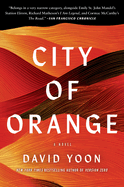
| Publisher: | Putnam | |
| Genre: | Psychological, Literary, Thrillers, Fiction | |
| ISBN: | 9780593422182 | |
| Pub Date: | May 2023 | |
| Price: | $18 |
| Now in Paperback |
by David Yoon
For those who think every post-apocalyptic novel is the same, City of Orange by David Yoon (Version Zero; Super Fake Love Song) argues otherwise. The opening is familiar: man wakes up in a desolate nowhere and can't remember his name or the traumas preceding this moment. But Yoon refuses to follow the typical script, taking readers on an often funny and always compelling journey through the mystery man's past, an alternative present and the uncertain future.
The novel begins in 2010 in California, all concrete and burned-out housing developments. Clearly, this is the wasteland that remains after a catastrophic event. Or is it? As the man scrabbles for food and shelter, his memories start to return, and readers learn what has brought him here, and whether he can survive. Yoon provides a mixture of dry humor and dark days, as when the main character questions his preoccupation with the detailed measurement of wind patterns: "He is not a hero in some adventure book about surviving against all odds. He is the guy who hides away procrastinating with string and cardboard. Last Surviving Member of Human Race Puts Things Off. He giggles at that headline." Readers will also laugh, even as they understand the desperation of his circumstances.
City of Orange also raises questions about time and money, and the stuff humans accumulate, while sharpening the focus on what really matters: family, love, and enduring friendships. Despite its dark premise, City of Orange insists on hope and continuity in the face of tragedy. --Sara Beth West, freelance reviewer and librarian
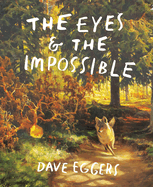
| Publisher: | Knopf | |
| Genre: | Friendship, Animals, Dogs, Social Themes, Juvenile Fiction, Action & Adventure | |
| ISBN: | 9781524764203; McSweeney’s, $28, wood-bound, 250p., 9781952119453 | |
| Pub Date: | May 2023 | |
| Price: | $18.99 |
| Starred | Children's & Young Adult |
by Dave Eggers, illust. by Shawn Harris
Animals have very full lives that humans never see. Johannes the dog introduces readers to his life in a bustling and vibrant urban park in the immersive middle-grade animal adventure The Eyes and the Impossible by Dave Eggers and Shawn Harris, the team behind Her Right Foot and What Can a Citizen Do?
Johannes plays a critical role in the urban park in which he lives: he acts as "the Eyes" for the "rulers" of the park, three wise old Bison. The Bison, who are penned, depend on the Eyes for information so they can guide the park's carefully balanced Equilibrium. Johannes, running fast "like light," spends his days gathering news of the resident animals and the human visitors. When odd, entrancing symbols appear, and a new species is introduced to the park, Johannes and the other animals must work together to maintain balance.
Eggers brings to life an animal world that exists alongside our own for a thought-provoking examination of identity, belonging, and freedom. Johannes and his animal companions are not anthropomorphic creatures or humans in sheep's clothing--they behave as (we assume) animals would in a human world, if we were privy to their conversations and thoughts. Shawn Harris inserts beautiful paintings of Johannes into "classical landscapes by artists long departed," such as Narcisse-Virgile Diaz de la Peña's In the Forest (backmatter includes a full list of artworks). Harris's illustrations give readers a glimpse of various parts of the park, and grants the book a timeless feel. The Eyes and the Impossible is compelling and heartfelt, destined to be read again and again. --Kyla Paterno, freelance reviewer
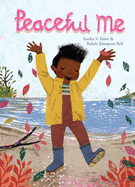
| Publisher: | Groundwood Books | |
| Genre: | Emotions & Feelings, Health & Daily Living, Mental Health, Social Themes, Self-Esteem & Self-Reliance, Juvenile Fiction | |
| ISBN: | 9781773063416 | |
| Pub Date: | May 2023 | |
| Price: | $19.99 |
| Starred | Children's & Young Adult |
by Sandra V. Feder, illust. by Rahele Jomepour Bell
"Sometimes being peaceful is easy. Sometimes it takes work to get there." In this wise, gentle, gorgeously illustrated companion to Angry Me, a child explores the many ways they can feel peaceful... and what to do when they don't.
As in Angry Me, Sandra V. Feder and Rahele Jomepour Bell's equally delightful team effort, the child in Peaceful Me recognizes a variety of ways to experience a certain feeling. There's "Quiet" peaceful, when alone; "Good game" peaceful, when things go well with friends; "Cuddle time" peaceful, with family. But sometimes the child doesn't feel peaceful. When they're no longer in the mood to fling autumn leaves in the air but their friend (the protagonist from Angry Me) keeps throwing, the hero takes steps to calm down. Deep breaths, imagining favorite things, finding a quiet place, giving themselves (or a tree) a hug--all these strategies help the child find their peaceful self again.
In her stunning illustrations, Bell uses hand-printed textures, scanned and painted digitally, to create a layered, many-patterned look that is enormously appealing. With charming and colorful detail, each scene depicts the brown-skinned child in cozy brown overalls, green-striped shirt, and blue shoes as they make their way through the mostly pleasant moments of the day. The child waters plants, plays with friends, and sometimes simply relaxes, gazing at the ceiling. Peaceful Me will make a truly lovely addition to any preschool or kindergarten shelf. --Emilie Coulter, freelance writer and editor
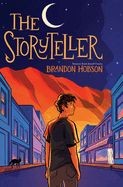
| Publisher: | Scholastic | |
| Genre: | United States - Native American, Country & Ethnic - General, Fantasy & Magic, People & Places, Mysteries & Detective Stories, Juvenile Fiction, Fairy Tales & Folklore | |
| ISBN: | 9781338797268 | |
| Pub Date: | May 2023 | |
| Price: | $17.99 |
| Children's & Young Adult |
by Brandon Hobson
An anxious sixth-grader spends a night in the desert seeking closure in Brandon Hobson's unconventional and surreal Indigenous adventure, The Storyteller.
Ziggy Echota's mom disappeared 10 years ago, one of many Native women missing from mountainous Poisonberry, N. Mex. Classmate Alice's sister vanished, too, and Alice agrees to guide Ziggy to secret caves that could hold clues about his mom. Alice is full of stories, especially about the Nunnehi, magical, protective Cherokee storytellers. Their overnight adventure involves eccentric characters, each of whom imparts a lesson to Ziggy. Unconventional stories from Ziggy's motorcycle-driving grandma feel practically mundane after a vitriolic encounter with Andrew Jackson reincarnated as an armadillo, and an appearance by a hawk with Beatlemania. With wisdom gained from these encounters, though, Ziggy subdues his grief and embraces the power of memories to bring peace.
National Book Award finalist Hobson (Where the Dead Sit Talking) begins his children's/teen book career with a quest deeply rooted in his Cherokee identity. Using efficient sentence structure and episodic chapters, Hobson embraces the unreliability of his characters and melds fantasy with folklore to yield trippy results. "Stories don't have to be believable to be true," says Alice. "And stories don't have to be true to be believable," comes the response. These tensions are omnipresent. Ziggy is profoundly connected to history yet desperate to release the past; he is drawn to the natural world yet terrified of its dangers. Ziggy's is an unexpected and offbeat mystery, but readers who dip down this rabbit hole should find it intriguing. --Kit Ballenger, youth librarian, Help Your Shelf
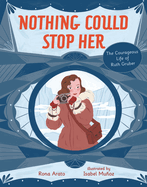
| Publisher: | Kar-Ben | |
| Genre: | Biography & Autobiography, Women, Juvenile Nonfiction | |
| ISBN: | 9781728445618 | |
| Pub Date: | May 2023 | |
| Price: | $18.99 |
| Children's & Young Adult |
by Rona Arato, illust. by Isabel Muñoz
Rona Arato chronicles the adventurous and admirable exploits of a globetrotting, boundary-pushing journalist in the upbeat chapter-book biography Nothing Could Stop Her: The Courageous Life of Ruth Gruber, illustrated by Isabel Muñoz (The Singer and the Scientist).
Intellectually gifted and deeply curious, Brooklynite Ruth Gruber excelled in school. At only 20, she earned a doctorate in Germany in 1932, during Hitler's rise to power. Gruber, Jewish and a brilliant linguist with wanderlust, capitalized on opportunities to travel and returned to Europe in 1935--much to the chagrin of her parents, who worried about escalating antisemitism. "No use trying to stop you," her father said. As a foreign correspondent, Gruber routinely challenged gender norms and societal expectations as she sought far-flung locales, including a collective farm of the Yakut people in the Soviet Arctic and in occupied Italy. "She filled dozens of notebooks... and she took as many pictures as she could," raising awareness about underrepresented populations. While this story ends with notable activism in 1945, an author's note in the backmatter explains that Gruber's journalistic and political work continued for decades longer.
Arato (The Ship to Nowhere) efficiently covers Gruber's commendable exploits using brief, active chapters, often with breaks. Most spreads feature either an informative sidebar or one of Muñoz's expressive spot illustrations, which delightfully capture changing trends in addition to Gruber's escapades. Scalloped chapter headers and quaint, floral glyphs help create a calm reading experience, while the icy blues seen throughout the book evoke the chill of Gruber's remote Arctic and Alaskan assignments.
This enthusiastic biography charmingly depicts the commitment and tenacity of this intrepid explorer-journalist. --Kit Ballenger, youth librarian, Help Your Shelf